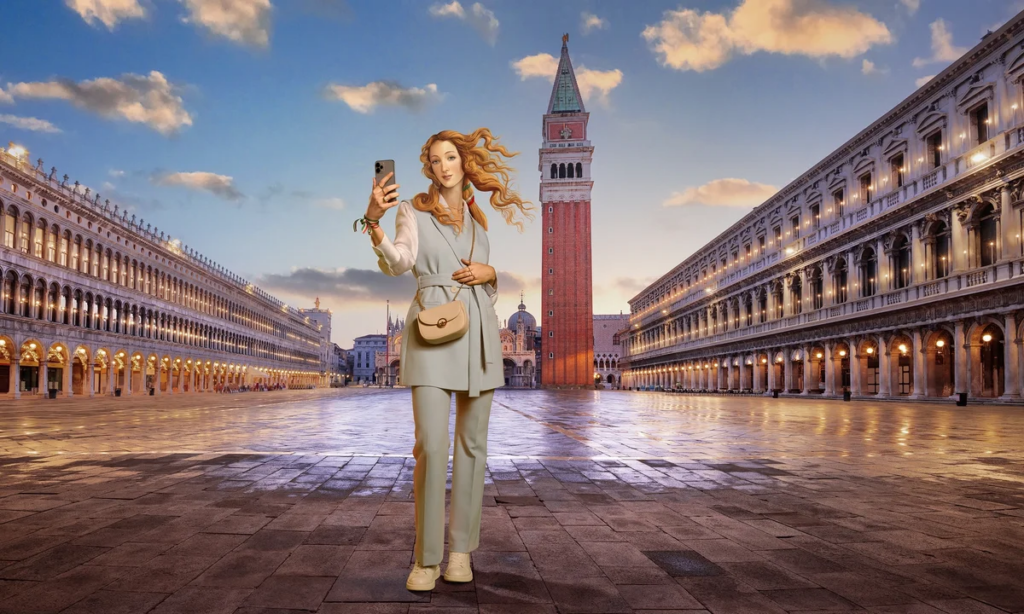The Italian tourism ministry believed that converting a 15th-century art classic into a 21st-century “virtual influencer” would attract tourists.
Venus, goddess of love, can be seen eating pizza and taking Instagram selfies. Venus is dressed unlike the original. Influencer claims to be 30 or “maybe just a wee bit (older) than that.”
Critics are labeling the new ad campaign a “new Barbie” that degrades Italy’s culture.
“Trivializing our heritage in the most vulgar way, transforming Botticelli’s Venus into yet another stereotyped female beauty,” said Mi Riconosci art historian and activist Livia Garomersini last month.
According to ENIT CEO Ivana Jelinic, the yearlong campaign by national tourist agency ENIT and advertising company Armando Testa cost 9 million euros (approximately $9.9 million).
Jelinic claimed the promotion targeted younger travelers in foreign markets. The online Venus debuted in Dubai at the Arabian Travel Market this week after launching in Italy on April 20.
Jelinic told The Associated Press that Botticelli’s Venus “seemed to us like an immortal icon who could represent Italy well.”
The new Venus has been ruthlessly memed online, appearing in garbage bins, with Mafia boss Matteo Messina Denaro, and elsewhere.
The campaign’s use of stock photos and other missteps, such as a promotional film presenting a Slovenian vineyard as Italy, are also criticized.

The campaign’s theme, “Open to Meraviglia” (Open to Wonder), combines English into an Italian tourism marketing while the government protects the Italian language as a cultural pillar.
Language mistakes abound.
According to University of Pavia professor Matteo Flora, an automated translator translated Brindisi, a southern Italian port town, into “Toast” on the campaign’s website. That website section is currently hidden.
“Let’s not talk about the creativity point of view,” Flora remarked, “You may like (the campaign) or not, but on a technical point of view, it has been… a sort of avalanche of problems.”
Insecure domains allow anyone to steal the material and spoof the project.
Flora claimed the campaign wasted money. The ad’s creative team built the virtual Venus using the “intelligence of human creativity,” but Flora showed how he could rapidly create a comparable campaign using AI for 20 euros. Thousands have shared his social media posts.
Art historians claim that a likeness of Botticelli’s masterwork degrades the 15th century original’s beauty and mystery.
“Perhaps Botticelli would not be happy about this,” remarked Sapienza art history professor Massimo Moretti.
According to marketing experts, using classic images like the “Birth of Venus” risks offending culture.
“The more you try to alter something that’s historic, probably the greater the outcry,” said Pace University Lubin School of Business marketing professor Larry Chiagouris.
“People will say, ‘You’re changing culture. Because it’s our past, you’re altering us.” Chiagouris added.
“I didn’t like that they used the Botticelli Venus like that, since it is a piece of art,” Rome high school student Riccardo Rodrigo remarked. “They made it social friendly to amuse Gen Z, I think it was unnecessary since it can be used just as it is and not modified like they did.”

Botticelli’s “Birth of Venus” is at Florence’s Uffizi Galleries.
Any press is excellent for the campaign developers.
Jelinic of ENIT stated, “It has become so viral,” adding that “web users have made her come alive” even while installing the new Venus in unglamorous locales.
Jelinic stated it was interesting for social communication. Critics are wrong—our campaign is attractive.
Tourism officials will employ billboards and airport and train video screens to extend the promotion.

